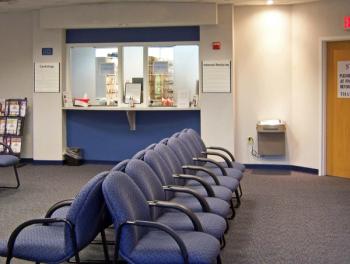
Retail clinic visits by young, insured patients with PCPs on the rise
Visits to retail clinics quadrupled from 2007 to 2009, and up to 40% of their patients paid out-of-pocket for their care despite reporting they had a primary care physician.
Your young, insured patients increasingly are visiting retail clinics for healthcare.
Visits to retail clinics quadrupled from 2007 to 2009, and up to 40% of their patients paid out-of-pocket for their care despite reporting they had a primary care physician (PCP).
Since first appearing in 2000, retail clinics have received criticism from the
“The increased demand for primary care might reduce access to PCPs, which may increase the demand for retail clinics,” note Ateev Mehrotra, a policy analyst at the Rand Corp. and associate professor of medicine at the University of Pittsburg School of Medicine, and Judith R. Lave, professor of health economics in the Department of Health Policy at the University of Pittsburg, authors of
The most common retail clinic patients were young adults without PCPs. But visits by patients aged at least 65 years increased to 14.7% during the 2007 to 2009 study period, compared with 7.5% in a previous study than ran from 2000 to 2006. Other visit data gleaned from the most recent study indicate that Monday is the most popular day for retail clinics, but 44% of retail clinic visits overall occurred when physician offices were likely to be closed. Upper respiratory or urinary tract infections were the most frequently diagnosed conditions in patients visiting retail clinics for illnesses.
The spike in older patients visiting retail clinics may be attributed to a substantial increase in visits for vaccinations over the study period, the authors note. But preventive care visits also are on the rise, with an increase to 47.5% of visits during the study period from 2007 to 2009 compared with 21.8% of visits from 2000 to 2006.
Chronic care visits accounted for just 1% of retail clinics visits. The number of patients with insurance who visited retail clinics increased by more than 3% over the study period, and the number of visits by patients without PCPs saw a similar increase. Visits by patients without insurance and those who did report having a PCP dropped by about 3% each.
In terms of retail clinics’ share of healthcare spending, assuming prior estimates of $78 per visits, the authors estimate retail clinics took in about $460 million in 2009 with a grand total of 5.97 million visits overall in contrast with 577 million visits to traditional physician offices and 117 million visits to emergency departments the same year.
“It will be interesting to track demand at retail clinics after the Affordable Care Act is fully implemented,” study authors note. “Newly insured people will probably seek primary care in the traditional setting, which could decrease the demand for retail clinics. However, if wait times for appointments with PCPs increase nationwide, as they have in Massachusetts after that state’s health reform, demand for the clinics might increase.”
A
The study compiled data from Minute Clinic, TakeCare, and Little Clinic-the three largest retail clinic operators in the United States, which together operate 81% of the nation’s retail clinics.
Newsletter
Stay informed and empowered with Medical Economics enewsletter, delivering expert insights, financial strategies, practice management tips and technology trends — tailored for today’s physicians.















